Upgrading your kitchen cabinets can transform the look and feel of your cooking space while improving its usefulness. The kitchen is said to be the heart of the home. It’s where families come together to cook, eat, and spend time with each other.
If your kitchen cabinets are outdated or damaged, it can make your entire kitchen look unappealing. But before you start tearing out your old cabinets, there are a few factors that you need to consider.
Here we will deep dive into what you need to know before replacing your kitchen cabinets and how to replace kitchen cabinets. We will cover everything from measuring for new cabinets and shopping for them to preparing the space for installation and adding finishing touches.
We will also discuss some common mistakes to avoid when replacing cabinets and how to save money on cabinet replacement without compromising quality. So, keep reading if you’re ready to give your kitchen a new look.
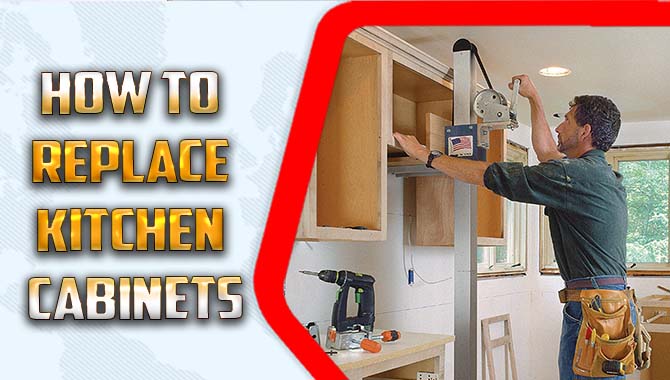
Factors To Consider Before Replacing Kitchen Cabinets
Replacing kitchen cabinets can be a great way to give your kitchen a new look and improve its functionality. However, before you start tearing down your old cabinets, several important factors must be considered. First, closely examine your existing cabinets and determine if they are structurally sound.
If they are in good condition, you may be able to save money by simply refacing or repainting them instead of replacing them entirely. Next, consider your kitchen layout and how the new cabinets will fit into the space. Will they provide enough storage and counter space? Will they match the style and design of the rest of your kitchen?
Finally, think about your budget and timeline for the project. Replacing kitchen cabinets can be a significant investment, so ensure you clearly understand all the costs involved before you start. By carefully considering these factors, you can make an informed decision about whether or not to replace your kitchen cabinets and ensure that your new cabinets meet all of your needs and expectations.
How To Replace Kitchen Cabinets – With Effective Ways
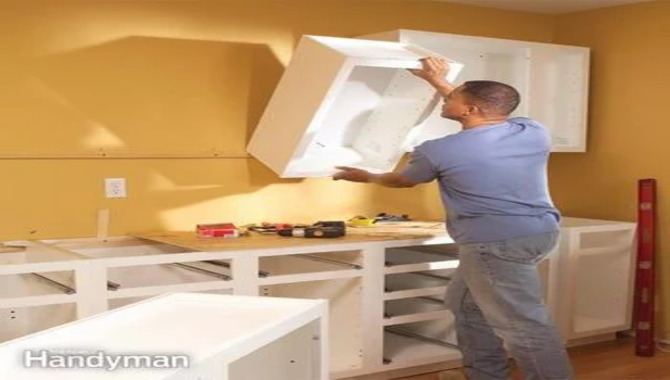
Replacing kitchen cabinets is not daunting if you follow a few simple steps. Begin by planning and measuring accurately to avoid any issues later on. Once you have chosen the right type of cabinets that suit your needs and budget, carefully remove the old ones to avoid unnecessary damage. Then, install new cabinets with precision, and don’t forget about finishing touches like adding crown molding or cabinet hardware for a new look. Here is the process of how to replace kitchen cabinets.
1. Measuring For New Cabinets
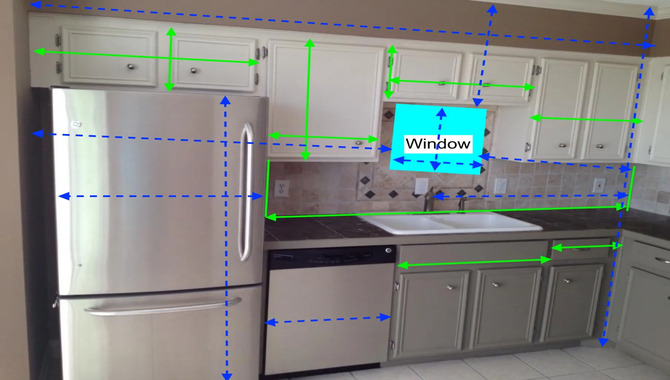
To ensure a successful cabinet installation without costly mistakes: Take precise measurements twice by accurately measuring the width and height of the space while considering obstacles like pipes or electrical outlets. Hiring professionals to take accurate measurements is advisable if unsure. Before you start shopping for new cabinets, measuring your existing ones accurately is important. Here are some steps to help you measure for new kitchen cabinets:
- Measure the width of each cabinet opening: Use a tape measure to measure the width of each cabinet opening from wall to wall. Make sure to take into account any obstructions like pipes or electrical outlets.
- Measure the height of each cabinet opening: Measure the height of each cabinet opening from the highest point on the floor to the underside of the countertop.
- Measure the depth of each cabinet: Measure the depth of each cabinet from the front edge to the back wall.
- Note any irregularities: If there are any irregularities in your current cabinets (such as uneven walls or floors), note them so you can adjust your measurements accordingly.
By taking accurate measurements, you can ensure that your new cabinets will fit perfectly in your kitchen and make your renovation project successful.
2. Shopping For New Cabinets
Replacing kitchen cabinetst can be a great way to update the look and feel of your kitchen. When shopping for new cabinets, there are several things to consider. First, think about the style and color of the cabinets you want. Do you prefer a traditional wood finish or a modern, sleek design? Next, consider the material and construction of the cabinets.
Solid wood is a popular choice for its durability and timeless appeal, while laminate options can offer a more budget-friendly alternative. It’s also important to measure your space carefully to ensure that your new cabinets will fit properly.
Don’t forget about additional features such as soft-close drawers and adjustable shelves that make your new cabinets even more functional and convenient. With these considerations in mind, you’ll be ready to select the perfect cabinets for your kitchen renovation project.
3. Preparing The Space For Installation
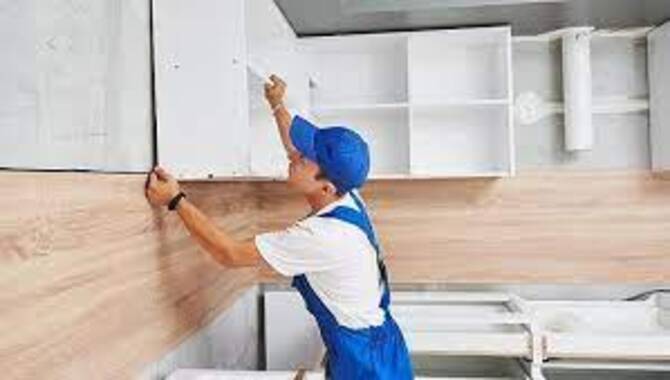
Proper preparation is crucial when installing new kitchen cabinets. Start by removing old cabinets and clutter. Measure the space carefully to accommodate your new base cabinets, wall cabinets, upper cabinets and pantry. Consider hiring a professional contractor for plumbing and layout.
Turn off all electrical connections before you make pilot holes for studs. Try refacing or RTA cabinetry to get that fresh look for your kitchen without breaking the bank.
4. Installing The Cabinets
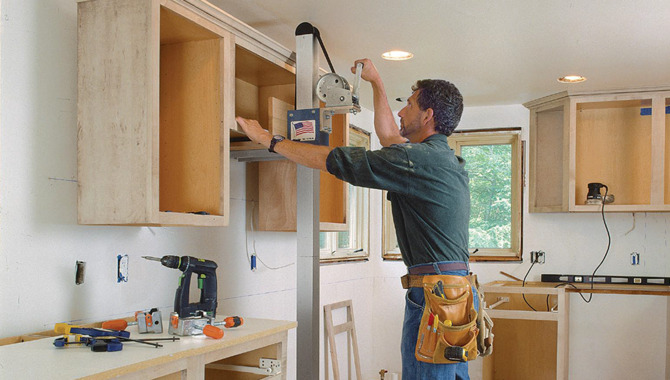
Installing new kitchen cabinets requires careful preparation and planning. Measure the space accurately and ensure the walls are prepped for new cabinetry. It’s essential, to begin with upper cabinets and then move on to lower ones. Secure them with screws into wall studs, ensuring they remain level throughout the installation. Finally, add trim pieces, cabinet hardware, and a fresh coat of paint for a new look that will make a big difference in your kitchen design.
5. Finishing Touches
To add the perfect finishing touches to your new kitchen cabinetry, start by updating the cabinet hardware with options like drawer pulls or hinges from Amazon. A fresh coat of paint or refacing with laminate or veneer can make a big difference too. Then take it up a notch with crown molding, fillers strips, and even open shelving for display.
Common Mistakes To Avoid When Replacing Cabinets
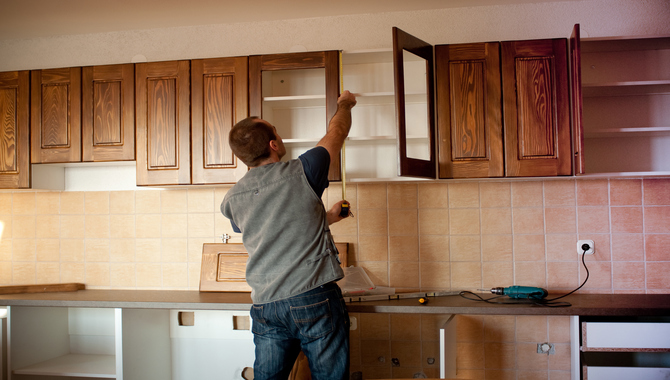
Careful planning is crucial to avoid common mistakes when replacing kitchen cabinets. Some key considerations include accurately measuring for new cabinets, selecting the right cabinet material, optimizing your kitchen layout for efficiency, ensuring proper lighting and electrical outlets, and taking your time with the installation process.
By following these guidelines along with expert advice from retailers like Home Depot or Amazon, you can achieve a fresh new look for your kitchen that will make a big difference.
How To Save Money On Cabinet Replacement
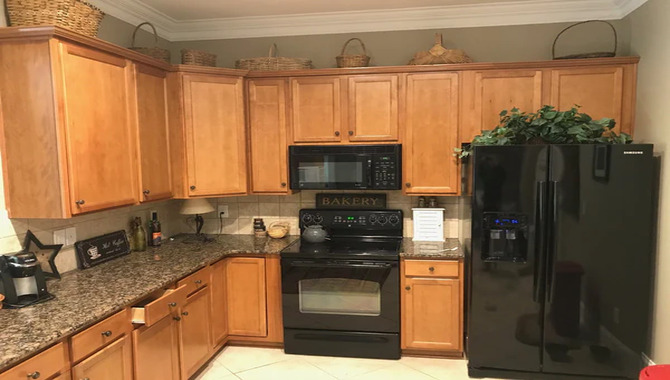
Refacing or opting for ready-to-assemble (RTA) cabinets can help save money on kitchen cabinet replacement. For additional savings, look for sales and discounts on cabinet materials and hardware from retailers like Amazon or Home Depot. While DIY installation can be cost-effective, ensure you have the necessary skills and tools like a tape measure, ledger, drill, utility knife, and glue to complete the project accurately.
Conclusion
Replacing kitchen cabinets can give your kitchen a completely new look and feel. However, before you take on this project, it’s important to consider factors like budget, style, and functionality. Replacing kitchen cabinets involves measuring your space, shopping for new cabinets, preparing the space for installation, installing the cabinets, and adding finishing touches.
Following the steps outlined in this guide, how to replace kitchen cabinets, you can successfully replace your kitchen cabinets and create the kitchen of your dreams. With proper planning and execution, replacing your kitchen cabinets can be an exciting and rewarding project. So why wait? Get started today and transform your kitchen into the space of your dreams.
Frequently Asked Questions
[rank_math_rich_snippet id=”s-1175bdc9-2bcd-4b82-aced-15ffe2f6c441″]

I am passionate about home engineering. I specialize in designing, installing, and maintaining heating, ventilation, and air conditioning systems. My goal is to help people stay comfortable in their homes all year long.
